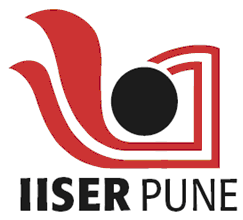
ARNAB MUKHERJEE LAB
Indian Institute of Science education & Research, Pune

1.Drug-DNA Intercalation
Our group works primarily in computational biophysics area. One of our primary interest is to understand the mechanism of molecular recognition processes. In this, we have worked extensively on the mechanism of drug intercalation into DNA. Otherwise, we are interested in and have worked on ligand-protein interactions, protein-DNA interactions, etc.
2.Structural Changes in the DNA
Here we studied local transition from B- to A-form of DNA. Earlier studies mainly focussed on the complete change from B- to A-DNA. We introduced a coordinate Zp' which is similar to standard Zp coordinate that distinguishes A- and B-DNA at local level. Free energy calculations involving all ten different dinucleotide sequences (AA, CG etc.) captures the observed propensities of B- to A-DNA transition.
3.Single Water Entropy
Another major area of research in our group is to understand the entropy and dynamics of water. We have developed a method to calculate the entropy of individual water molecules. We have applied the method to study water entropy in a single protein cavity, around ions and hydrophobes.
4.Distribution of Residence Time around DNA
We calculated residence time of water around 360 sites distributed over 20 different DNA. From there we made a kinetic model to show that the residence time peaks at the middle of the DNA. The timescale is in excellent agreement with experimental NMR studies.
5.DNA-Protein Interaction
We show that partial intercalation of the amino acid is responsible for the kink formation in DNA. The statistical analyses of crystal structures also show that in the partially intercalated state DNA has highest Roll angle corroborating our findins.
6.Dynamical Recrossing
Another major interest of our group is to understand the dynamical recrossing at the transition state. We are working on the transcription factor calculation for the drug-DNA intercalation processes. In this connection, we also worked on the origin of "internal friction" in proteins. In fact, we showed that the existing method to estimate the internal friction may be neglecting the memory effect and therefore need to be revisited
7.Machine learning in chemical physics
Recently, our group has become interested to apply machine learning and AI methods to understand the problems of computational biophysics. We work on DNA conformation predictions, protein's surface curvature calculation and try to connect them again to water entropy.
8.Origin of internal friction
Kramers theory states that rate is inversely proportional to viscosity. However, it was found that many systems do not follow this inverse behaviour. This is sometimes attributed to the presence of friction offered by the system, called internal friction. We investigate internal friction using simple model systems. We found that the current methods used to determine internal friction cannot distinguish between internal friction and solvent memory effects present in the system.
